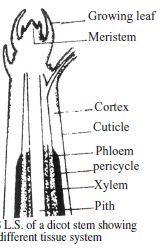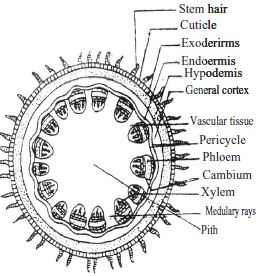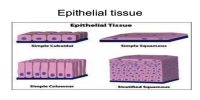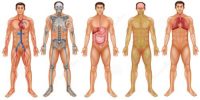When one or more kinds of tissues are united and together perform a similar function, then it is known as tissue system. They are classified into three types namely:
ii) Ground Tissue System and
iii) Vascular Tissue System.
Epidermal Tissue System: – This tissue system makes the outer cover of plant organs like, roots stems, branches, leaves, fruits. etc. Typically it consists of a closely arranged single layer of parenchymatous cells. There may have unicellular or multicellular hairs.
Functions: To give protection to the internal portion of the plant organ.
Ground Tissue System:
Theses are the main bulk of tissues of roots and stems. The ground tissue is differentiated into outer cortical region and inner medulla or pith region. In dicot stem the cortical region is ususlly subdivided into three zones namely:-(a) Hypodermis, (b) General, Cortex and (c) Endodermis, Medulla and Medullary Rays encircled by, the Pericycle form the central Pith.
Functions: Functions of this tissue system are to give mechanical siregth to the stem and to store food materials.

Vascular Tissue System:- Vascular tissue system comprises of two complex tixssue, namely; Xylem and phloem, These tissues are embedded in the ground tissues. In dicotyledonous stems xylem and phloem lie side by side on the same radius and between them there is a kind of Meristamatic tissue named Cambium.

Phloem tissue lies towards the periphery and xylem toward center of the stem. Arrangement of different tissue system of a dicot stem is shown In longitudinal (I.S.) and transverse section (T.S)
Function:
- Conduction of water and dissolved food materials.
- Conduction of prepared food.
- Give mechanical strength to the stem, and Storage of food where necessary.














